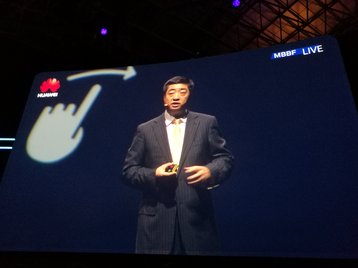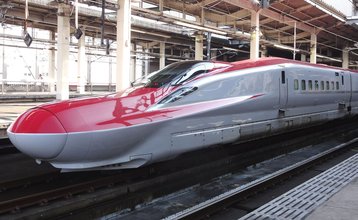This week, Huawei and GSMA hosted the seventh annual Global Mobile Broadband Forum in snow-covered Tokyo. The opening keynote was delayed by an earthquake in the small hours, but this was a truly impressive show. The big topic was 5G, and that meant a conference whose first day used robots, dancing and dubstep to illustrate the potential of virtual reality, artificial intelligence and the Internet of Things.
5G is an upgrade to mobile networks, and the first commercial 5G deployments are unlikely to happen before 2020. Providers like China Mobile, SoftBank, BT, NTT and Orange are racing to deliver it - but why should data center professionals care?
Advances in antenna design or radio spectrum management don’t concern you, but you do care about cloud computing, and 5G will require lots and lots of cloud. By extension, it will require all the things you know and love - servers and racks, switches and PDUs. It will require space, power and cooling. It will require edge computing and fiber networks. Despite all the innovation in wireless connectivity, light remains the best communication medium.
5G will live in the data center
In the future, all services will be delivered through mobile applications, Ken Hu, one of Huawei’s three rotating CEOs, predicted in his opening keynote, noting that there were around two million mobile apps in existence today.
But his predictions went further: “Cloud computing is everywhere. It becomes more available and more affordable than before. So now we can easily develop and launch all applications right in the cloud. As a result, I’m sure that all the applications will be operated in the cloud.”
“We believe that end-to-end cloud architecture is highly needed, and it will help us to make the whole network more agile, and to allow the network to get access to the resources on-demand and better support applications for people and for things.”
“We believe that a strong application enablement platform is also needed. This platform should provide APIs, data storage and data analysis capabilities, as well as cloud management services. We believe this will help third-parties to develop applications in a much more effective way. It will also help service providers to open up their network capabilities to the market.”
This sentiment was echoed by Li Yue, president and CEO of China Mobile, world’s largest mobile network operator with about 835 million subscribers.
“I agree with Ken Hu’s point on cloudification,” Yue said. “I think this is how we will develop a low cost, more efficient way to operate.”
“When it comes to ICT, we pay attention to the construction of new data centers and new networks. We are trying out network virtualization and SDN technologies. We will start 5G field testing as soon as possible - this year we have made a lot of efforts in technical testing, starting from next year, we will work on field testing. By 2018, we will conduct large-scale pre-commercial testing.
“We hope that by 2020, we will have a commercial 5G service in China.”
Like the Shinkansen
Ryan Ding, executive director and president of products and solutions at Huawei, compared the challenge of building 5G infrastructure to the construction of the Shinkansen - the famous Japanese bullet train network.
According to Ding, Shinkansen became a success because it used the best technologies available at the time, built an ecosystem around the railway - including introduction of revenue sharing models - and made speed the defining feature of travel.
Shinkansen brought massive economic and social benefits to Japan. 5G could bring similar benefits to the entire world.
“We believe that before 5G comes, we can do a lot of work to ensure readiness of our networks,” Ding said. “This should be end-to-end: from the radio tower, to the metro, to the PoP. The key word for this new network architecture is all-cloud.”


